
Trends in University Education in Science
Presented By: Simon Rhodes, PhD, Dean, School of Science, IUPUI
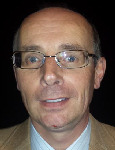
Dr. Rhodes
The speaker for Scientech Program on April 6, 2015 was Dean Simon Rhodes, Dean of the School of Science
at IUPUI in Indianapolis, Indiana. Dr. Rhodes started the lecture by showing a short video featuring the School of Science, IUPUI which was produced as a recruiting tool for students depicting a student’s life of learning, research, and the outstanding academic environment of IUPUI.
He then described a recently developed strategic plan and indicated its early implementation for IUPUI to be a leading premier urban research university. IUPUI serves more Hoosiers than any other university in the State of Indiana. The vision of the School of Science is to be the first choice for science students for every Hoosier and to be a major contributor of highest quality basic and applied science research. The School’s plans are to innovate, educate, engage, develop and communicate. The school will achieve its goals by collaborating with engineering and technology programs at Indiana and Purdue Universities.
The composition of the School of Science programs are mainly affiliated with Purdue University and to a lesser extent with IU Bloomington in the undergraduate, Masters, and PhD programs. There are currently 178 faculty members, 88 staff members, 2148 undergraduate science students, 270 Masters students, and 220 PhD students.
The major goal of the School is to contribute to Indiana’s needs for people with skills in the STEM area. 90% of the School Science graduates were from Indiana and 85%-90% stayed in Indiana. The ultimate goal is to increase STEM graduates by 10% per year.
Innovative activities were developed in partnerships between the Schools of Engineering and Education. Peer Led Team Learning was used to improve student problem solving skills and has been adopted by other leading universities. Living and learning environments were created in which female students live together in quarters called Science House where they can collaborate and obtain vertical mentorship. A new University Tower STEM floor for freshmen was started in a luxury hotel and conference center converted into student housing and classrooms where learning resources are part of the student housing. An Honor’s college program, designed to prepare students for professional programs with internship and collaborations with medical and dental and other professional schools, was developed with successful placements. A new LGRAD program for Lilly employees to enroll and participate in graduate programs without having to take time off from their jobs at Lily Laboratories was recently launched.
The School of Science presently has $14 million dollars of research grants.
Dean Rhodes then showed multiple faculties from the School of Science who have succeeded in their research and have received national and international honors. He also enumerated several graduates who have been successful in their careers.
Notes by Gonz Chua
Mining and Selling Radium and Uranium
Presented By: Roger Robison, MD, retired physician and medical historian
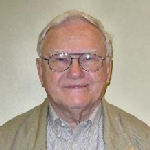
Roger Robison
Dr. Roger Robison, retired physician and historian, spoke about the mining and selling of uranium, an
unstable and radioactive member of the Actinide elements, along with radium, a radioactive
byproduct of the breakdown of uranium. Uranium, originally thought to be quite rare, is now known to
be ubiquitous and more common than gold. The Bohemian Sudeten border with Germany, rich with
silver mines in the 16th century, was found to be a rich source of uranium and radium once the silver
was depleted from these mines. This area, once it became Czechoslovakia after WWI, provided
Russia with abundant uranium reserves for its atomic bomb production. Currently Canada and
Australia are major suppliers to the world including China and India.
The 1903 Nobel Prize in Physics was awarded to Antoine Henri Becquerel and to Pierre and Marie
Curie for their discovery and characterization of radioactivity emitted from radium mined in the
Sudeten mine of St Joachimstal. Posthumously, the notebooks and gravesite of the Curies were
shown to be highly contaminated by radioactivity, showing the health risks of their research. The
Curies did not patent their discoveries, and Germans were the first to commercialize radium. For
example, the “Radium Palace” at the St. Joachimstal mine used radiation to “treat” ailments such as
arthritis, while thorium, a byproduct of radium production, was used in toothpaste to whiten teeth.
Needless to say these applications were not FDA approved.
After the 1848 acquisition of the Western territory from Mexico, the United States acquired more than
just an area that quickly spawned the gold rush of 1848-1850. This land also allowed the USA to get
into the uranium mining business, based on rich reserves in the Colorado Plateau and the Paradox
Valley. This region was especially rich in Carnotite, a mineral deposit containing both uranium and
vanadium, the latter of which was used to strengthen steel. The Flannery brothers of Philadelphia
were heavily involved in commercialization of uranium mined in this region. The Flannerys built a
major radium refinery in Canonsburg, PA (Standard Chemical Co.). Signs of historical radioactive
contamination can still be found today in Canonsburg, PA, where substantial amounts of radioactive
material were shipped.
Despite two prominent persons having died of throat cancer in the 1880s (Ulysses Grant in 1885 and
Frederick, Crown Prince of Germany in 1888), the use of teleradium radiation for cancer therapy
remained limited. It wasn’t until Professor James Douglas Jr., then President of Phelps-Dodge
copper mining company, funded research at New York’s Cancer Hospital, that the substantial benefits
of teleradium therapy relative to X-rays became understood and better utilized.
Dr. Robison kept the audience on its toes with a brisk presentation filled with interesting facts.
Notes by Ray Kauffman
Hosting the 2012 Super Bowl
Presented By: Allison Melangton, CEO, 2012 Indianapolis Super Bowl Committee
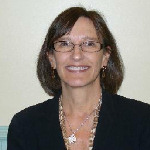
Allison Melangton
The Scientech Club was most fortunate in having Allison Melangton as our speaker today. Her
accomplishments in general are outstanding but her accomplishments that benefit our community are almost
legendary.
She was educated at Colorado State University with a BA in Sports Administration. She served on the
Executive Leadership team of the Indiana Sports Corporation for twenty years, serving the last two years as
president. On November 1, 2014 she was named the Senior Vice President responsible for overall production
of major events at the Speedway.
The project of working to attract the attention of the NFL owners and executing a successful Super Bowl is at
least a four-year task. First comes the preparation of the bid that will be presented to the owners. This bid
package is extremely comprehensive and was put together, under her direction, by a team of 80 people. A
Super Bowl is one of most complicated events to plan and execute in America. A comparable event would be
a national political convention.
The city of Indianapolis has an enduring philosophy of planning and doing events that help the entire
community. A goal is to get as many people involved as possible. The 2012 Super Bowl engaged 8,000
volunteers and produced “legacy investments” that will benefit the city for years into the future. The east side
of Indianapolis benefitted from investments totaling $154,000,000 that were used to enhance the area for years
to come, for example, the CHASE Community Center.
Another way to expand involvement was to ask Indiana residents to knit scarves that would be given to all
8,000 volunteers to help identify them and to keep them warm if the weather got cold. In total, knitters from 45
states and four foreign countries produced 13,000 scarves!
Another approach was to ask 1000 women to contribute healthy breast tissue samples to be used in cancer
research. One sample contributor developed breast cancer so the researchers were able to examine before
and after tissue samples.
Other cities are more focused on providing an event so big-spending visitors can come to town and enjoy a
Super Bowl football game. There is little to no residual benefit to their city except the advertising surrounding
the hosting of the game.
Because of the careful planning and the community involvement (1,000,000 local people visited the Super
Bowl Village over the eight days of the event), the 2012 Super Bowl is widely regarded as the most engaging
and successfully organized Super Bowl in history. Allison played a brief video of accolades by TV
personalities, sports announcers, and others that would make any central Indiana resident very proud to be a
part of this community.
As residents of Indianapolis, we acknowledge and are indebted to our long list of community leaders who set
the philosophy that events, in and of themselves, are not necessarily attractive unless there is a longer term
community benefit. We are particularly indebted to Allison Melangton; she is an outstanding leader.
Notes by Dick Garrett
Jet Engine Bird Strike Criteria and Verification Tests
Presented By: Larry Nightingale, Chief Test Engineer, Rolls-Royce, Indianapolis
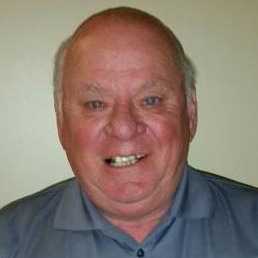
Larry Nightingale
Larry graduated from Western Michigan University in 1969 and joined GM. Roll Royce bought Allison
Gas Turbine in 1995. Larry has now served 46 years in experimental test. He is an Associate Fellow Test
and Measurement; one of only two in that specialization of the 100 Associate Fellows in Rolls Royce. He has
been involved in the test programs for all the major gas turbine engines since the 1970s including engines for
trucks, buses and boats. The most recent is the F136 Engine and Liftfan for the JSF (Joint Strike Fighter)
program.
Rolls Royce is a true engineering company with 1/3 of the employees being engineers. In Indianapolis
they employ 1500 engineers. They have engine test facilities around the globe with the largest number in
Indianapolis and Derby England.
Larry believes in The Riehle Axiom, named for a German test engineer from the turn of the century.
“One test is worth 1000 expert opinions.” Testing is very expensive in facilities costing up to $100M. It takes 9-
10 years to develop, test and certify a new engine which can have 30K parts. As an example of the ultraengineering
in these engines, the fan blades heat to 1700°C (half the temperature of the surface of the sun),
yet they are cooled very efficiently by air fed back from the compressor into vanes in the structure of the fan
blades themselves. The analogy Larry offered was that the cooling is so efficient that an ice cube would not
melt in a microwave oven. Rolls Royce takes pride in being special in their drive to deliver engines of the
highest integrity through a process to develop, test, review and refine their designs through countless
iterations. Testing is a critical component of this process; in fact, 30% of the development cost is in test and
verification.
Testing and certifying a new engine is an involved process with many severe FAA requirements.
Examples of extreme tests are the requirements that an engine perform without loss of thrust in severe rain
storms and to start in 30 seconds after being chilled with liquid nitrogen. Most tests are done on the ground,
but some require Flying Test Beds which are actual aircraft. Similarly, thrust must be maintained at the highest
and hottest airports (thinner, less dense air for less aircraft lift).
The toughest test (Gold Standard) is “bird ingestion with fan blade containment.” This requires that
when birds (geese) are ingested (sucked) into the engine any fan blade breakage/damage is contained within
the engine itself and that any debris be ejected without endangering the passengers. A fan blade at full power
during take-off has enough kinetic energy to lift a mid-size car (~3000 pounds) 7 stories high. Clearly the
integrity of the engine design as well as that of the testing is crucial. Rolls Royce tests this by propelling dead,
but representative, birds into an operating engine. They contract with farmers to raise the birds which are
harvested and frozen, then thawed to simulate a live encounter, all part of the rigorous testing process.
As an aside, through continual development, Rolls Royce has consistently improved engine fuel
efficiency by 1% per year for the past 10 years, each percentage saving $270K per year in fuel costs and
eliminating creation of 700 tons per year of CO2.
Looking forward, Larry anticipates continued improvement in performance through evolution of existing
designs and materials. Another focus in development is on unmanned flight with future generations of the
Global Hawk.
Notes by John Peer
A new approach to college admission for the 21st century
Presented By: Jim Goecker, V.P., Enrollment Management and Strategic Communications, Rose-Hulman
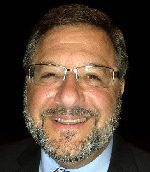
Jim Goecker
Today’s speaker was Rose-Hulman Institute of Technology enrollment chief Jim Goecker who gave a very interesting talk about the difficulties of choosing students for admission to the school. In the past, any University or college needed to sift through thousands of applicants, each of whom has applied to many different schools to find the most qualified students that they can attract for the freshman class. Once the school made their selection, they must wait to see which students will also select Rose-Hulman.
To try to make the process more efficient, Rose and other institutions as well have offered early enrollment to students who are seriously interested in their institution. To be accepted in the early enrollment process, the student must commit by May 1 to enroll in that particular school. All other applicants then go onto the standby list.
The usual approach has been to make student selections based on traditional criteria, recognizing that as many as 1 in 3 students might fail to graduate 4-5 years later. These criteria have included high school grades and class rank, SAT scores, recommendations and student essays. Currently, the schools are trying to choose students that have a higher perceived chance of success, followed up by making every effort to help them succeed after enrollment. One solution for the school was to allow all in, and wash the weaker students out. Currently, the schools are trying to choose students who have a high chance of success, and make every effort to help them succeed in school.
Mr. Goecker has been working to streamline the selection process in an attempt to identify the students who are most likely to be a success in school, and also in life. Toward this end additional considerations have been incorporated, including gender, ethnicity, participation in extracurricular activities such as athletics, band and music, and other factors as well.
Very recently, there has been an interest in identifying students who might be in a borderline situation who nevertheless, would be likely to succeed in school.
One of the things that they have been looking at is curiosity. If a marginal student asks a lot of questions, and likes to tinker, it might stand to reason that he might be more likely than another with similar credentials to succeed in school. To test this out they give students a standard curiosity test developed by others. They have in the early analysis not found that curiosity favors one student over another.
A second and more productive quality that they look for is the desire of a student to control his own destiny. This type of student responds to internal self-generated stimuli, versus a student who relies on the teacher to spoon feed him information, and blames the teacher if he gets low marks. Such type of person is said to be externally controlled, and therefore is possibly more passive. To test this, they give prospective students the locus of control test. To take this test, click on the following link: http://interactives.indystar.com/news/2014/RH-Locus/mobile. They have found that the internally controlled person does tend to be more likely to succeed.
The challenge continues for both the students and the schools, but freshman selection criteria will remain a hot topic for debate and study into the far future.
Notes by Bill Elliott
Structural Optimization and Additive Manufacturing (3D Printing)
Presented By: Andres Tovar, Ph.D., Assistant Professor. Department of Mechanical Engineering, Purdue School of Engineering and Technology at IUPUI
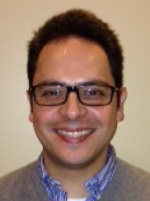
Dr. Andres Tovar
Our speaker today was Andrés Tovar, Ph.D., Assistant Professor Department of Mechanical
Engineering Purdue School of Engineering & Technology, Indiana University–Purdue University,
Indianapolis Indiana.
His talk presented advances in structural optimization methods, particularly topology
optimization, which allows optimal material distribution without any preconceived shape. This design
approach is changing the way new products are created and has contributed to areas such as
building and aerospace structures, microelectromechanical systems, and vehicle crashworthiness.
New areas of applications include ultra-lightweight porous structures that allow maximum multiphysics
performance with minimal use of material. The production of the resulting complex, highperformance
designs is enabled by additive manufacturing technologies (3D printing - three
dimensional printing). The use of topology optimization and 3D printing is demonstrated in the design
and production of several engineering components as the result of the research collaboration
between IUPUI and companies such as Honda R&D Americas, Raytheon, 3D Parts Manufacturing,
and Wal-Mart.
A variety of 3D materials deposition methods use different localized thermal setting materials,
photo-polymerization materials (using a localized laser/UV light system) or extruded films to form new
products. Such layering sequences allow the scheduling of micro area to macro area layered
materials film depositions, resulting in the build-up of the desired finished shapes and materials
contents for the designed product.
Computer aided design (CAD) and finite element analysis (FEA), combined with selected 3D
deposition technologies, make a great partnership for new product optimization. Medical implant parts
modeling and other major new product design enhancement studies are routinely becoming available,
allowing wider use of these combined sets of evolving technologies.
There is also a great need for additional materials development for use with 3D printing and
layering that will allow highly cost effective scaling of manufacturing capabilities and further
improvements in design optimizations resulting in lower product cost. Achievement of printing of large
area/volume items, such as automobile bodies and other major parts is being demonstrated.
However, cost effectiveness in this area needs much improvement.
Notes by Dick Carter
Role of Innovation in Sustainability
Presented By: Ken Miller
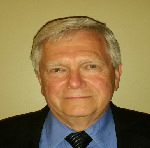
Ken Miller
A good definition of "sustainability" is "making things last," according to Charles Holliday,
former CEO of DuPont. It most concerns sustaining the health of the planet and providing a
prosperous lifestyle for us humans.
But prosperity comes with cost to the planet due to the waste that is created by our consumer
economy. The United Nations began setting goals in 1987 for sustainability in a comprehensive
scale, including social environmental, economic, etc. A major challenge to reaching these sorts of
goals is getting business on board.
Much of our waste is out of sight, and so out of mind. However, industries are beginning to
recognize the long-term risks from degradation of the planet. A must-see on this topic is "Big History
Project" by David Christian on YouTube.
(Ed Note: You can access the actual Big History Project course at "Big History
Project Course" if you like.)
The Industrial Revolution has brought on the Anthropocene Age in which human activity is
affecting the Earth's ecosystem. It is expected that the 21st Century will see more extinctions of
species than any other century in the history of life on Earth. Human population has increased by
27% from 5.5B to 7.7B from 1992 to 2012. But, plastic consumption has increased by 139% in that
same period.
While energy supply is often linked to sustainability issues, there is a misconception in the
sense that energy is virtually unlimited. The real concern is how to move from polluting sources of
energy to nonpolluting sources while balancing the cost of that transformation to society and the
economy.
Materials, unlike energy, are not unlimited. Some of the vital materials used in products like
cell phones may run out within fifty years. However, if such materials can be recycled, then longevity
of materials may be extended for greater sustainability. This will require us to move from a linear
economy with waste products as the end of the line to a circular economy in which materials are
recycled and reused.
In order to make that transition producers and consumers must view products differently. We
will have to move away from consumers valuing ownership to recognizing that real value is use.
Producers will need to recognize a moral responsibility for planetary stewardship.
Click HERE to view the Power Point slides for this presentation.
Notes by Jeff Rasley
STEM Is Not Enough; We Also Need the Liberal Arts
Presented By: Richard Brian Gunderman, MD, PhD, Indiana University
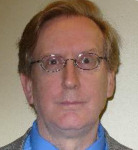
Richard Gunderman
The full title of today’s presentation is: STEM is not enough….The need for liberal arts. Dr. Richard
Gunderman delivered a thoughtful expression of his notion that, while STEM, (Science, Technology,
Engineering, and Mathematics), is critical to the technological advancements he uses every day in his
career as a radiologist at Riley Hospital, overemphasis of STEM in a college curriculum is a form of
intellectual malnourishment. Higher education systems of many other countries emphasize almost
exclusively a STEM curriculum. The United States has the advantage in its distinctive contributions by
residential liberal arts colleges. He mentioned several in Indiana such as Wabash College, DePauw
University, Franklin College, Earlham College, and Hanover College.
He pointed out his belief that intelligence does not necessarily equal wisdom. While liberal arts
may not be the best degree for income potential he likened a STEM education to a bonsai tree that
has not had its potential growth allowed. Several references to Socrates, Plato and Aristotle were
used to define a thoughtful approach as opposed to a didactic one. Four questions posed by Aristotle
can be asked of anything. What is it made of? What does it do? How is it made? What is it? He
likened a liberal arts education to being a catalyst, which means to loosen up. He mentioned that
Socrates said he did not want to win arguments but rather was after the truth. The most important
catalyst is conversation.
Dr. Gunderman suggested we also focus our educational opportunities on the over 65 age group.
“We need a college for retired people”. He thinks a liberal arts education would fit nicely for these
types of folks without focusing on wage earners.
Notes by Jim Dashiell
Aging and Alzheimer's Disease
Presented By: Christina Brown, BS, CCRC Clinical Research Manager, IU Alzheimer's Center
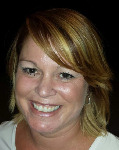
Christina Brown
Ms. Brown worked at a Dementia Center for five years and then went into research at Indiana University. She has been there for ten years and is now Clinical Research Manager of the Indiana Alzheimer’s Disease Center. It is one of 29 Alzheimer’s Research Centers in the U.S. U.S. (https://www.nia.nih.gov/alzheimers/alzheimers-disease-research-centers)
Ms. Brown worked at a Dementia Center for five years and then went into research at Indiana University. She has been there for ten years and is now Clinical Research Manager of the Indiana Alzheimer’s Disease Center. It is one of 29 Alzheimer’s Research Centers in the U.S. U.S. (https://www.nia.nih.gov/alzheimers/alzheimers-disease-research-centers)
She began by telling us that dementia is not a normal consequence of aging. Some people suffer from Mild Cognitive Impairment (MCI). This may progress to Alzheimer’s disease (AD) in 15% of the cases. 35% of these cases may return to normal and 50% stay at the level of MCI.
170 disorders may result in dementia, with about half of them being Alzheimer’s disease. Dementia is defined as memory loss, mainly short term; loss of cognitive function; progressive worsening; and it affects everyday life. Over 5.4 million people in the U.S. have Alzheimers.
The main causes of dementia are: Alzheimers; vascular disease; Lewy body disease; and other (of these some are due to head trauma, Syphilis, Huntington’s chorea and other neural diseases). Alois Alzheimer, a German physician, described the disease in 1906. The first patient had memory loss and confusion. After she died, an autopsy of the brain showed plaques, tau tangles, cortical shrinkage and vascular changes. A slide of a normal brain next to a brain with Alzheimer’s disease dramatically highlighted the difference.
In addition to vascular dementia and Lewy body disease, Parkinson’s disease, frontotemporal dementia, normal pressure hydrocephalus, Creutzfeldt-Jakob disease and certain familial diseases may cause dementia. There are a few genetic causes for dementia.
Aging is associated with Alzheimer’s disease. At age 75-80, 10-20% of people have dementia; at age 80-85, 20-40% have dementia and at age 85+ years, 40-80% have the disease. If one had a parent with Alzheimers, that person has a 20% increase in risk factor. If an aunt or uncle had the disease, the risk goes up by another 10%.
America has a healthcare crisis with AD. With the aging of the population, especially the baby boomer (1946-1962) generation, more cases will be diagnosed. Perhaps only 20-40% of the cases have been diagnosed at present. At this time, no cure has been found. It cannot be prevented or slowed in progression. Drug studies are ongoing but currently they treat mainly symptoms.
Professional evaluation of dementia patients may reveal some reversible causes: depression, thyroid disorders, and alcohol or medication problems. AD programs may help structure routines and modify the home environment. Raising awareness of certain safety and security issues such as cooking, driving, managing medication and firearms can help.
From the time of discovery of brain pathology to the diagnosis of AD may be as much as 15-20 years. In the future, the hope is that medications may be prescribed to modify or cure the disease. Vaccination against AD is also a possibility. Possible activities that may moderate AD are exercise, cognitive stimulation, Mediterranean diet, spicy foods?, turmeric?, and coconut oil? Social engagement and treatment of depression are important in mitigating AD behavioral problems.
Notes by Bill Dick
Tour of the Indianapolis Zoo – Orangutan and (Behind the scene) Elephant Exhibits
Tour Arranged By: Jim Bettner
Tour Guide: Niki Kowalaski
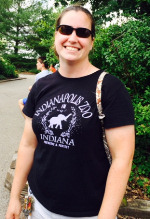
Niki Kowalski
Niki Kowalski was our tour guide. She has a BS from Butler University and is the Senior
Elephant Trainer at the Zoo.
We began with a visit to the new Orangutan Center. Two orangutans were climbing on ropes in a part of the Center. A staff member made a short presentation about the orangutans. The Zoo has 4 male orangutans and 5 female orangutans. The Zoo has a purebred female orangutan that will be mated with a purebred male orangutan. In the wild, the young orangutans stay with the mother for up to 10 years.

Orangutan
We were shown a replica of the orangutan’s hands and feet, which are very big because of their weight. They have large hands and feet as they are heavy. They climb on vines or ropes but do not jump because of their weight. They have a 9 foot arm span from hand to hand and live to be 60 or 65 years old.
In the wild, there are places where orangutans are decreasing as palm oil plantations are being created and the forests are being cut down. Poachers take the babies away from their mother. They are the only greater apes in SE Asia. The Zoo works on campaigns to save them.
Our guide took us to the elephant barn where she works. The Zoo has 8 elephants: 4 adult females, 1 juvenile male, 1 juvenile female and 2 female calves. The calves were created by artificial insemination, which was pioneered for elephants at the Indianapolis Zoo. As it is illegal to import elephants and it is difficult to keep an adult male. Thus artificial insemination is very important to the zoos. The Zoo has only African elephants. Elephants weigh around 8,000 pounds and can run at 24 MPH. They eat 200 to 300 pounds of food a day, mostly hay.

Elephant Tombi
We met Tombi, a female elephant, up close and personal. She was in large stall within the elephant barn with her handler. Tombi is 38 years old. Her trainer had her do many poses for us. Her feet are giant callus pads. The trunk has two fingers at the end .She showed us she can pick up small objects with the fingers at the end of her trunk. Her tusks are used to strip bark from trees and to dig up food. She is given a bath every day.
We even got to pet Tombi. Her skin feels like a sisal rug. Tombi’s relationship with the staff is based on trust. There are 7 full time staff in the elephant area. Elephants are social and must be in compatible groups. Their life span is in the late 40 to 50+ year range. The oldest elephant in the Zoo is 48 and has arthritis. She is given medicine for that.
In 2011, a poaching crisis started. China is the largest market for ivory from poaching. China has promised to do something about it, but over an extended period of time. The US is the second biggest market. The black market in the US is based on internet sales and forged documents that show items made of ivory from elephant tusks were made prior to 1974, when the import of ivory was banned.
The visit to the Indianapolis Zoo was very interesting. Our thanks to Jim Bettner for arranging it,
Notes by Malcolm Mallette
STEM Volunteer Opportunities
Presented By: Laura Green, US2020 Volunteer Outreach Coordinator, assisted by Natalie McNally
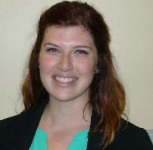
Laura Green
Laura is an I.U.P.U.I. graduate with a B.S. degree in psychology, studying for a master's degree. She has taken
some time off from school to explore career options in the non-profit sector. She had her first experience with
AmeriCorps working with the Boys and Girls Club of America. Through AmeriCorps she came upon the
TechPoint Foundation for Youth. She is the Volunteer Outreach Manager charged with linking corporate and
community partners in the science, technology, engineering and math fields to engage their employees in
hands on volunteer opportunities with students in those subjects.
The TechPoint Foundation for Youth ensures that Indiana’s underserved K-12 students have access to
experiential learning opportunities that inspire the pursuit of STEM careers. Indianapolis was chosen as one of
the seven cities on a competitive basis to offer this program which is the resource for connecting youth
serving organizations in the STEM fields. In Indiana, the demand for STEM professionals is projected to
outpace supply. Even in this economic downturn period, STEM skills remain in demand. In the STEM area
there are 2.4 jobs for every unemployed person. In the non-STEM area there are five unemployed people for
every job available.
85% of teenagers expressed some interest in STEM but they don’t know anyone working in the fields or even
understand what people in these fields do. The total workforce is about 50-50 female versus male but the
stem workforce is about 25% female and three quarters male. The stem workforce is 85% white and Asian and
13% black and Hispanic.
The plan for Indianapolis is to build a supply of STEM volunteers with each volunteer working 10 to 12 hours
per school year. The volunteer would enthusiastically explain what he or her does in the field to expose the
student. Participating organizations with funds and volunteer personnel include First Interstate Bank, Roche,
Eli Lilly 3M and others. Volunteers usually work in really small groups for coverage continuity.
Currently schools in Indianapolis are selected among those receiving free or reduced cost lunches and with at
least 55% minority population. This does not exclude any student not fitting these criteria who wants to
participate. The season runs throughout the school year from September to March usually with weekly
meetings. The programs include academic triathlons, robotics, Lego Mind storm and many other technical and
cerebral events including life sciences, chemistry and physics among others. The programs all take place in the
schools because of the issues of transporting the students.
If you have an interest in volunteering to participate in this very worthwhile program please contact
laurag@techpointyouth.org 317-504-6072 or natalie@techpointyouth.org 317-502-7694
Notes by Jerry Kurlander
Colon Cancer Detection
Presented By: Joe Henderson, MD, Gastroenterologist, Indianapolis
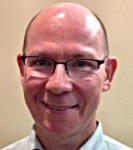
Dr. Joe Henderson
Today's talk was given By Dr. Joseph Henderson, a Gastroenterologist from Community Hospital
here in Indianapolis. The talk was primarily about colon cancer screening in asymptomatic people
with average risk for colon cancer. The discussion largely does not apply to persons with other forms
of bowel disease, genetic predispositions, or a prior diagnosis of colon cancer or precancerous colon
polyps.
Dr. Henderson's first point was that cancer of the colon is the 3rd most common type of cancer in both
men and women. While less common than breast or prostate cancer, it is the 2nd leading cause of
cancer deaths. In 2015, 132,700 new cases of colorectal cancer(CRC)will be diagnosed. 49,700
deaths will be attributable to these cases. Predisposing to colon cancer is age over 50, first degree
relative with colon cancer diagnosed before the age of 60, adenomas, and Sessile Serrated Polyps.
There are also rare genetic cases such as Lynch syndrome, and familial adenomatous polyposis
syndrome. Race, obesity, gender, alcohol, high red meat consumption, and smoking increase the
risk to some extent.
Dr. Henderson then stressed the importance of early detection of cancer and the predisposing polyps.
He discussed several screening options. These include the detection of blood in the stool (fecal
occult blood test - FOBT) by any of several methods, and directly visualizing the cancer and predisposing
polyps by colonoscopy, sigmoidoscopy, or CT colonography. While not perfect, he feels that
colonoscopy is the gold standard detecting 90 to 95% of colon lesions. If the cecum cannot be
reached, then CT colonography might be used as an adjunct.
Important: a single stool test for occult blood in the Doctor's office is not sufficient. A valid test
requires individual specimens from 3 different stool samples for the Hemoccult Sensa test.
Important: do not retest the stool to verify a positive test. Go straight to colonoscopy if a stool
sample is positive for blood.
Important: colonoscopy requires an experienced endoscopist, a very clean colon, and visualization of
the entire colon from the anus to the cecal tip.
Screening for CRC: USPSTF (United States Preventive Services Task Force) recommendations:
- Age 50-75: Screening Recommended
- Age 76-85: Recommends against routine screen, but consider on individual basis
- Age GT 85: Do not screen
- Choose one of the following
. Colonoscopy, every 10 years
. Flexible sigmoidoscopy, every 5 years, with high sensitivity FOBT every 3 years
. High sensitivity FOBT annually
..... Immunochemical FOBT (FIT)
..... Hemoccult Sensa
- Insufficient evidence of benefit or harm for CT Colonography
Screening for CRC: Consortium recommendations
- Average Risk: Start age 50
- Preferred Strategy: detect polyps & cancer
. Colonoscopy every 10 years
. Flexible sigmoidoscopy every 5 years
. Double-contrast barium enema every 5 years
. CT Colonography every 5 years
- Alternate: Tests that primarily detect cancer
. High-sensitivity FOBT (FIT vs Hemoccult Sensa) annually
. Fecal DNA, unspecified interval (recent 3 year interval per CMS)
Visualization methods preferred over indirect methods: Prevention vs Detection!
What to do? Best practices:
1. Visualize and remove all lesions by colonoscopy. Sigmoidoscopy and CT colonography are
effective but somewhat inferior.
2. If above option is not chosen, then check stool for blood using Fecal Immunochemical Test
(FIT)--note, only 2 samples are needed. If positive, follow up with colonoscopy. Fecal DNA is
likely effective as well. Note that in the case of sigmoidoscopy, FOBT is likely necessary as
well as the entire colon is not studied.
Special thanks to Dr. Henderson for this interesting and informative discussion.
Notes by Bill Elliott